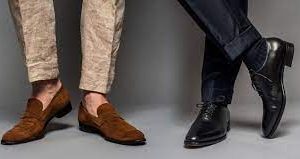3D printing could be useful in almost any field, including fashion. We’ll concentrate on a fascinating trend: 3D printed shoes. You may not realize it, but Additive Manufacturing can be beneficial in the footwear market.
Designers can create clothes using 3D printing, as we saw with the Virus Collection. However, its use in fashion technology does not stop there, as it’s possible to create shoes with stunning designs. When compared to conventionally manufactured foam parts, 3D printed parts last longer and provide greater performance and comfort.
3D printing also allows for more design freedom and variety in final product properties. Designers, for example, can create specific symmetries and define where they are located. For example, to provide more cushioning in the heel and firmness in the arch.
As a result, it is clear that technology is progressing. Designers are currently primarily using 3D printing for prototyping and personalization. However, it goes beyond high fashion and sneakers to include insoles and specialized equipment. According to the most recent study, additive manufacturing in the footwear industry will generate $4.4 billion between 2020 and 2030.
3 main methods to use 3D printing in the shoe industry
3D printing, like other industries, can be used to create new manufacturing processes. It can expand any company’s options and opportunities. Their use of 3D printing in their manufacturing process demonstrates that the shoe industry’s environmental impact can be altered.
As a result, when the finished product arrives, the consumer receives a more personalized item. A shoe that is tailored to their specific requirements. This can result in a better product in terms of fit and style. The technology allows the designer more leeway. It might provide consumers looking for a more unique and fashion-forward shoe with a better way to express themselves.
3D printing has the potential to improve nearly every aspect of a shoe. 3D printing can amalgamate parts with better designs, eliminating assembly steps and producing more durable final products. Some of the main keys that 3D printing are evolving in the shoe sector are as follows;
-
Leverage the prototyping
3D printing allows footwear manufacturers to avoid issues that stymie progress and limit design options. 3D printers use a digital process that eliminates tooling, shortens the time between production phases, and allows for more customization.
Designer creates more prototype iterations per batch with 3D printing than with traditional methods such as injection molding. A CAD file can quickly transform a drawing into a production-ready design. The elimination of molds and the associated costs/time associated with tooling allows for multiple design variations per run.
Prototypes are created using production-ready materials by industrial 3D printers such as the Lux 3. It enables footwear manufacturers to conduct field testing with fully functional prototypes at an earlier stage. Early testing enables businesses to reduce risk by rapidly generating input and validating designs.
-
Making faster time-to-market
3D printers’ rapid prototyping function allows businesses to reduce development time. It also allows new products to reach the market faster than traditional methods. Early field testing with perfectly functioning prototypes ensures that the product works as it should and reduces potential market risks.
Companies could more effectively respond to customer demands once the product is on the market. 3D printing’s tool-free production allows for faster design changes in response to market feedback and trends. Personalized shoes are now available to everyone, and mass customization will gain traction in the coming years.
-
More and more customization
As you may be aware, each shoe size necessitates its own mold; developing a new mold will cost thousands of dollars. Customers who require custom footwear should hire a specialist to handcraft the item. Making custom products is much easier, faster, and more consistent with 3D printing.
Traditionally, specialists make foot lasts that are models of the patient’s feet for orthopedic insoles and custom shoes. Then, using a variety of materials, they create the insole or custom shoes that provide the necessary support. From digital scans or lasts, 3D printers can create single-material insoles and custom shoes.
Manufacturers of footwear can also use 3D printing technology to create diabetic footbeds. Diabetic foot disorder patients wear custom-made footbeds to reduce the risk of foot ulcers. The footbeds are custom-made to fit the patients’ foot aspects and provide the ideal amount of padding and stiffness.
Different machines used in 3D printers
In general, two types of machines are necessary for a 3D printed shoe: a 3D scanner and an LCD 3D printer. The following is a discussion of these machines:
-
3D scanner machine
Manufacturing, aerospace, medical, automotive, and other industries make extensive use of 3D scanners. Shoe manufacturers are now using it for a variety of purposes as well. In general, 3D scanning can capture various types of digital information about an object’s shape.
To accurately measure the distance between the object and the scanner, the machine employs a light source. They are so strong that they might easily capture a small object and attach it to an airplane. 3D scanning, on the other hand, can be used for computer-aided inspections and reverse engineering.
Reverse engineering is an effective method for creating digital designs from physical components. Along with technologies like 3D scanning and 3D printing, it could be a valuable tool in your prototyping toolbox. When you need to create new parts that reference or incorporate older designs but don’t have access to original CAD design, reverse engineering comes in handy.
-
LCD 3D printer
An LCD 3D printer is a machine that will give your design physical form. There is no need to use a manual process to create a mold or sole mold. Simply create the mold design (either manually or using 3D scanned data) and feed it to the LCD 3D printer. The printer will produce a perfect size mold in a matter of hours.
An array of LEDs generates Ultraviolet light in the LCD 3D printer. The light passes through an LCD panel before flashing complete layers at the resin tank. The LCD screen obscures the entire model image and exposes the current resin curing layer. LCD 3D printers are ideal for rapid prototyping and mass production. LCD 3D printing is a design-driven manufacturing process that allows for the creation of complex geometries.
Conclusion
In conclusion, the main concern of this topic is to highlight the 3 major strategies to consider in 3D printing for making shoes. 3D printers have evolved into an excellent productive manufacturing tool. Whatever you call it, 3D printing, additive manufacturing, or rapid prototyping is a unique technology with a long and exciting history. The contest is still ongoing. Personalized shoes are now available to everyone, and mass customization will gain traction in the coming years. Different big brands are adopting this technology, and engaging people to buy their best branded shoes online easily.












Add Comment